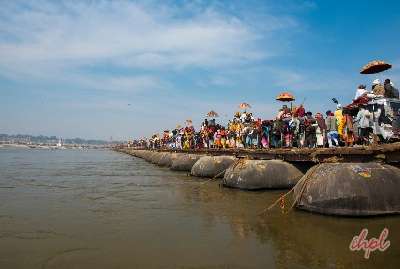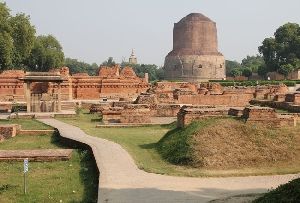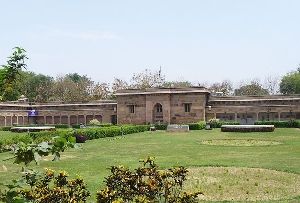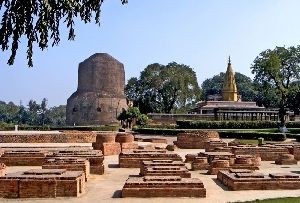One of the four most important Buddhist pilgrimage destinations in India, Sarnath in Uttar Pradesh is the site where Lord Buddha – the great sage delivered his first sermon after attaining enlightenment. The rich and eventful History of Sarnath Uttar Pradesh is an interesting and captivating one.
The History of Sarnath Uttar Pradesh mentions that Sarnath had also been referred as ‘Mrigadava’ meaning ‘deer park’ and ‘Isipatana’ denoting the place where holy men fell to earth. Legend has it that before the Buddha was born, devas descended upon earth to announce the birth to500 holy men. The holy men all rose into the air and disappeared, and all their relics fell onto the ground.
The History of Sarnath India began with the arrival of Gautam Buddha at this place in 528 B.C. after he attained enlightenment at Bodh Gaya. Here he preached his first discourse to his five former companions. This event is described in Buddhist texts as dharmachakra – pravartana, meaning the turning of the Wheel of Law. The Buddha taught them al that he had learned and thus they also became enlightened. This marked the foundation of the first Buddhist Sangha or the community of monks.
According to the History of Sarnath Uttar Pradesh, the Chinese traveler Hiouen Thsang had mentioned that the Deer Park at Sarnath was the forest gifted by the king of Benares of the Jataka, as a place where the deer might roan around unmolested. Thus Sarnath came to be named as ‘Migadaya’, so called because the deer could wander unharmed.
History of Sarnath India also mentions that the first preaching delivered by the Buddha at Sarnath is known in Pali as the Dhammacakkhapavathana Sutta. Other Suttas delivered here include Anattalakhana Sutta and the Saccavibhanga Sutta. The Buddha’s main teachings after his enlightenment centered around the Four Noble Truths and the Eightfold Path
After preaching his first discourse at Sarnath, the Buddha spent the next rainy season at the Mulagandhakuti vihara in Sarnath. By then, the Buddhist Sangha had grown to 60 in number. The Buddha then sent the members of the Sangha to preach his teachings all around.
The flourish of Buddhism in Sarnath can be attributed to a large extent to the support of kings and wealthy merchants inhabiting the region. By the 3rd century B.C., Sarnath had flourished as a major center for arts, and the town reached its zenith during the Gupta reign (4th -6th century A.D.). According to the History of Sarnath Uttar Pradesh, when the Chinese traveler Hsuan Tsang visited Sarnath in the 7th century, there were 30 monasteries and 3000 monks living in Sarnath.
Sarnath came to be a major center of the Sammatiya school of Buddhism, one of the Nikaya or Hinayana schools. The occurrence of images of Heruka and Tara at Sarntah monasteries indicate that Vajrayana Buddhism also flourished here.
The end of the 12th centyru saw Sarnath being ransacked by Turkish Muslims. The site was extensively plundered for building materials and has been lying in ruins since then. Thereafter, Sarnath remained completely deserted until 1836, when the British began excavations and restoration of this historic city.
History of Sarnath
Plan Your Dream Vacation

Please wait...
<
About Uttar Pradesh











